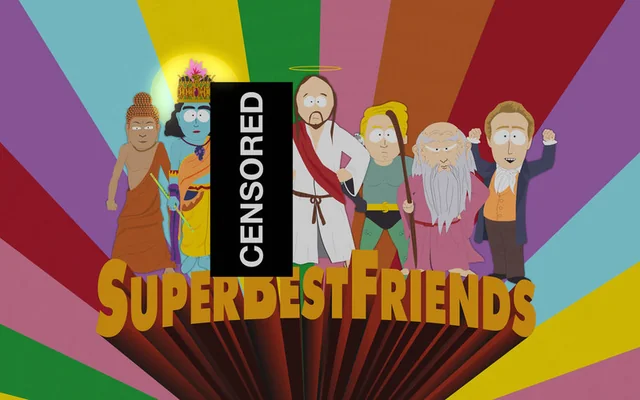Deadline: 14 June, 2024
Guest editors: Tim and Erin Jones
The juxtaposition of spirituality, “profanity,” and so-called “children’s media” elicits shocked giggles almost every time. Like when Erin (the pastor) of the podcast hosts on Spirited Animation uses the f-word in analyzing animated media, in collaboration with Tim (the scholar).
This made us wonder; what is “profanity”? Why do certain words and images seem out of bounds for use by certain members of a community – whether people of faith, specifically clergy, or non-believers in any religion? Might the wall dividing spiritual and secular, sacred and profane, be more malleable than we initially think? How might animation serve as an avenue for breaking down those barriers in new and creative ways? And the other way around, what does the examination of profanity and the profane bring to animation studies?

The goal of this guest blog theme is to provide a space for both scholars of animation and religious studies to create dialogue between the secular and sacred, examining how relations between the orthodox and irreverent are (inter)mediated in animation aesthetics, content, practice, and technology.
As with other blog themes, we encourage a broad definition of animation, and welcome diverse interpretations of the profane. Whether in the sense of the secular irreverent, unconformity, and disrespectful, as distinct from or opposition to the sacred – or of the unorthodox, sacrilegious and blasphemous. Topics may include, but are not limited to:
- How watching animations through an (ir)reverent lens can help us to understand whether animation addresses spiritual or profane experiences differently from other media forms, or serves as a platform for social commentary on religious, political, or cultural orthodoxies;
- Analyses of animated works that navigate the sacred and the profane, such as but limited to Looney Toons (1930-1969) Davey and Goliath (1961-1965), Belladonna of Sadness (1973), Ramayana: The Legend of Prince Rama (1993), Veggie Tales (1993-) South Park (1997-), The Rabbi’s Cat (2011), Popetown (2005), Attack on Titan (2013–2023), Mad God (2021), or Flee (2021);
- Any examination of the role of animation in the sanctification or profanation of cultural and religious material, like how animated content has been found offensive to particular religious groups, impacting the status of the image as iconography, symbolism, or idolatry:
- Investigations into the strategies employed by animators to challenge or subvert specific religious or cultural narratives.
Posts that are between 600 and 900 words discussing any aspect of the above topics are welcome. Please forward the text as a Word document, and contributors are encouraged to include clips, and at least one image to support their posts (less than 2 MB in size per image). Please also include a short bio (100 words max) and 3 keywords. All permissions are the responsibility of the contributor.
Please contact guest editors Dr. Tim and Pastor Erin Jones at spiritedanimation@gmail.com with submissions or questions, and CC co-editors Carmen Hannibal and Anastasiia Gushchina on blog@animationstudies.org.
